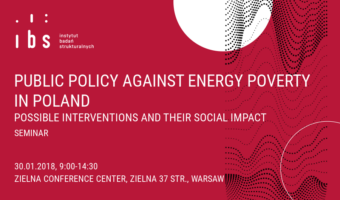It is impossible to effectively improve air quality in Poland, if energy poverty is not dealt with intensively – said Deputy Minister Piotr Woźny during a panel discussion in the last part of a seminar that we organized. We presented and discussed in a public debate the latest results concerning the scale of energy poverty in Poland, characteristics of the group most affected by the problem, and solution proposals. Experts from France and Germany presented support schemes for the energy poor in their countries, and then representatives of central and local administration discussed the potential solutions for Poland. We also presented the results of the impact of thermal retrofit on the Polish labour market.
Below we publish a report from the event, presentations of Ute Dubois and Laura Düpré, and a video recording. We encourage you to read the materials!
Energy poverty in Poland is decreasing, but it still affects 4.6 million people
At the beginning of the meeting Katarzyna Sałach(IBS) presented a definition of energy poverty, according to which “the phenomenon concerns people experiencing difficulties in meeting their energy needs, such as heating their homes, heating water and meals, lighting, and using basic household appliances”. Katarzyna Sałach and Piotr Lewandowski estimated the scale of the phenomenon in Poland using the Low Income – High Costs (LIHC) indicator and analysing data from the annual Polish Household Budget Survey conducted by the Central Statistical Office.
12.2% of the inhabitants of Poland experience energy poverty. This number dropped by 2.2 percentage points between 2012 and 2016, but the problem still affects 4.6 million people. The reason for the change was an increase in households’ incomes resulting, among other things, from “Family 500+”, a family benefit programme. Nevertheless, the percentage of energy poor people who were not income poor practically has not changed and amounts to about 5.6% of the population of Poland. The energy poor mainly live in villages and small towns: every fifth inhabitant of the rural areas is energy poor. Over 80% of the energy poor live in detached houses, and 25% are old-age and disability pensioners.
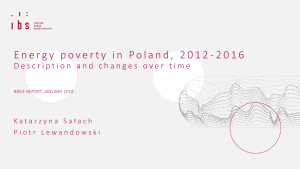
More in paper: Sałach, K., Lewandowski, P. (2018). Energy poverty in Poland 2012-2016. Description and changes over time. IBS Brief Report 01/2018.
How to reduce energy poverty in Poland?
Next Jan Rutkowski (IBS) argued that energy poverty is an important problem, not only because of its negative impact on health and life quality, but also in the context of fighting smog. Energy poor households may contribute to air pollution, because they cannot afford to use environmentally friendly energy sources. Such households often use old boilers and low-quality fuels.
The instruments currently used in our country do not solve the problem. None are addressed directly to the energy poor. Jan Rutkowski presented the actions that must be taken to help people affected by this condition:
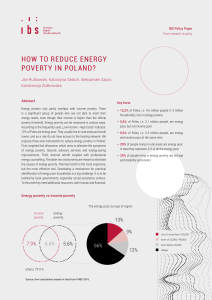
- defining the problem,
- creating an institutional structure for the prevention of energy poverty,
- developing a mechanism for identification of energy poor households,
- selecting instruments,
- implementing them.
Thermal retrofit it is the most expensive, yet the most effective tool
Konstancja Ziółkowska(IBS) discussed the instruments necessary to solve the problem, which are proposed by IBS experts (Jan Rutkowski, Katarzyna Sałach, Aleksander Szpor, and Konstancja Ziółkowska): fuel allowance targeted at the energy poor, energy advisory and energy-saving improvements, thermal retrofit with prior professional counselling. The targeted fuel allowance will alleviate the symptoms of energy poverty, whereas energy advisory and energy-saving improvements, as well as thermal retrofit, will help in removing its causes. Thermal retrofit is the most expensive, yet the most effective tool. The implementation of the proposed instruments will require a precise identification of energy poor households, carried out by municipalities and social assistance centres.
- More in paper: Rutkowski, J., Sałach, K., Szpor, A., Ziółkowska, K. (2018). How to reduce energy poverty in Poland? IBS Policy Paper 01/2018.
Acceleration of thermal retrofit may result in the creation of 100,000 jobs
Thermal retrofit, besides reducing energy poverty, may contribute to changes in the labour market. Piotr Lewandowski (IBS) presented the results of research conducted with Katarzyna Sałach and Konstancja Ziółkowska, where they estimated the labour intensity of the activities related to home insulation and modernization of the heating system, broken down into employee qualifications. Later they calculated the impact of these measures on the unemployment rate in four thermal retrofit scenarios (varied in terms of the assumed pace of the thermal retrofit and its complexity).
Acceleration of the pace of the thermal retrofit may increase the demand for work by as much as approx. 100,000 people a year. The demand will grow mainly for employees performing thermal retrofit in detached houses, especially for people with low qualifications. The estimates are different for different voivodships – the largest increase in labour demand will occur in the largest and most wealthy voivodships, while the impact on the unemployment rate will be the strongest in the less developed voivodships.
Support for the energy poor in France
During the next part of the seminar, French and German examples of support programmes for the energy poor were presented. Ute Dubois(ISG International Business School) pointed out that in France energy poverty affects 3.4 million people (according to the LIHC index). The instruments alleviating the symptoms of this phenomenon in France include: subsidies for low-income families, solutions raising energy efficiency (including thermal retrofit, replacement of boilers and household appliances), and instruments related to access to energy (for example, instruments enabling the selection of energy type and supplier, and preventing energy cut-offs). Ute Dubois described two instruments in detail: energy cheques, which will be introduced in France in the spring of 2018, and a thermal retrofit programme ”Habiter Mieux” (French for “to live better”), implemented since 2011. She also pointed out the challenge to identify the energy poor. → presentation
How to reduce unemployment and increase energy efficiency?
An example from Germany
Laura Düpré(Caritas Deutschland) described “Stromspar-Check Kommunal”, a German energy advisory and energy-saving improvements programme, implemented since 2008. The aim of the programme is to reduce the air pollution generated by low-income families. As part of the programme, energy advisors together with the beneficiaries analyse their spending on energy and their consumption profile, and as well install the most necessary energy-saving improvements. Specially trained long-term unemployed people can become such energy advisors. Thanks to the programme, over 280,000 households were able to reduce their energy spending, and CO2 emissions decreased by over 480,000 tonnes in the years 2008-2017. → presentation
How to increase energy efficiency by maximizing social improvements?
During the last part of the meeting there was a panel discussion with the following participants: Deputy MinisterPiotr Woźny (Ministry of Entrepreneurship and Technology), Deputy MinisterAndrzej Piotrowski (Ministry of Energy), Szymon Firląg (Buildings Performance Institute Europe), Andrzej Guła (Polish Smog Alert), Magdalena Kapuśniak (Marshal’s Office of the Śląskie Voivodship), Michał Mroczkowski (Town and Municipality Office in Sztum). The discussion was moderated by Jan Niedziałek (TVN24 BIS).
Poverty versus smog
It is impossible to effectively improve air quality in Poland, if energy poverty is not dealt with intensively – Deputy Minister Piotr Woźny (Ministry of Entrepreneurship and Technology)
(…) the biggest source of air pollution in Poland is low emission, i.e. the emission generated by detached houses that have not undergone thermal retrofit (…). Without solving the problem of thermal retrofit, we will make no progress in solving the [air quality – ed.] problem – said Piotr Woźny, Deputy Minister of Entrepreneurship and Technology. He emphasized that energy poor people will not be able to insulate the buildings they live in out of their own budgets. The introduced quality standards for solid fuel boilers and the planned quality standards for solid fuels will only contribute to the fact that we will burn more expensive fuels in more expensive boilers, without thoroughly solving the problem.
The Deputy Minister said that the government plans to spend PLN 180 million on thermal retrofit for detached houses, and that the energy poor should receive 100% funding for this purpose from the State’s budget. The first step in designing support for the energy poor must be a precise definition of the phenomenon.
Will an anti-smog tariff help?
In the context of energy efficiency improvement, Deputy Energy Minister Andrzej Piotrowski reminded the participants of the meeting about the system of white certificates and stressed the need to develop the district heating network and carry out thermal retrofit. Referring to the recently introduced anti-smog tariff, he assured that it will not increase the cost of heating with electricity. According to the Deputy Minister, the solution may encourage a change in the method of heating by switching from using solid fuels to electricity. Among the advantages of this solution, the Deputy Minister mentioned the possibility of providing electric boilers by domestic producers.
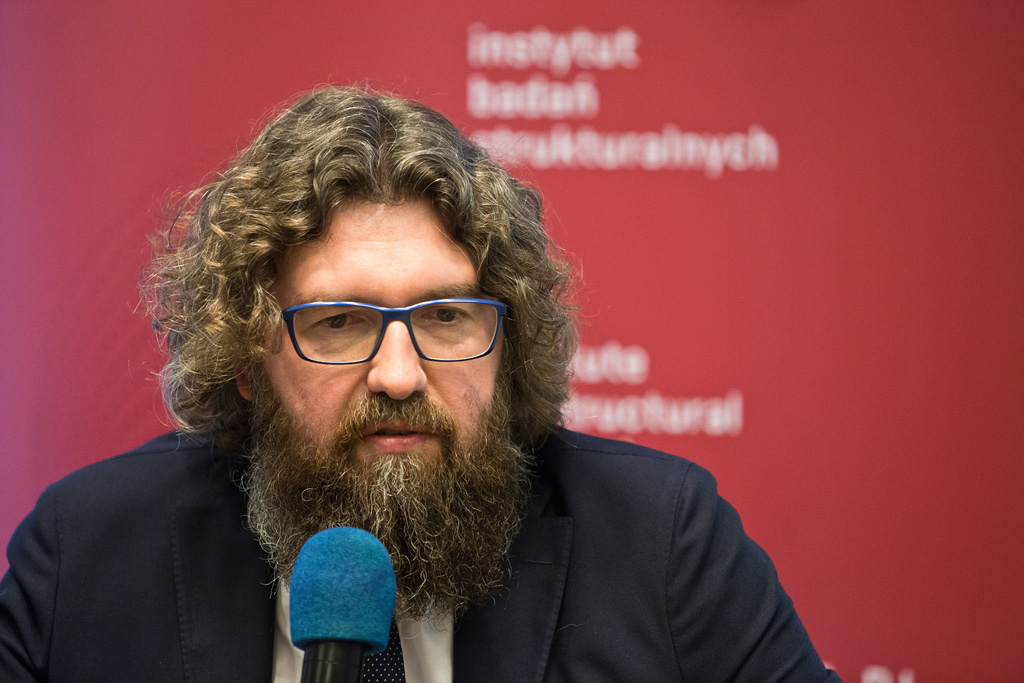
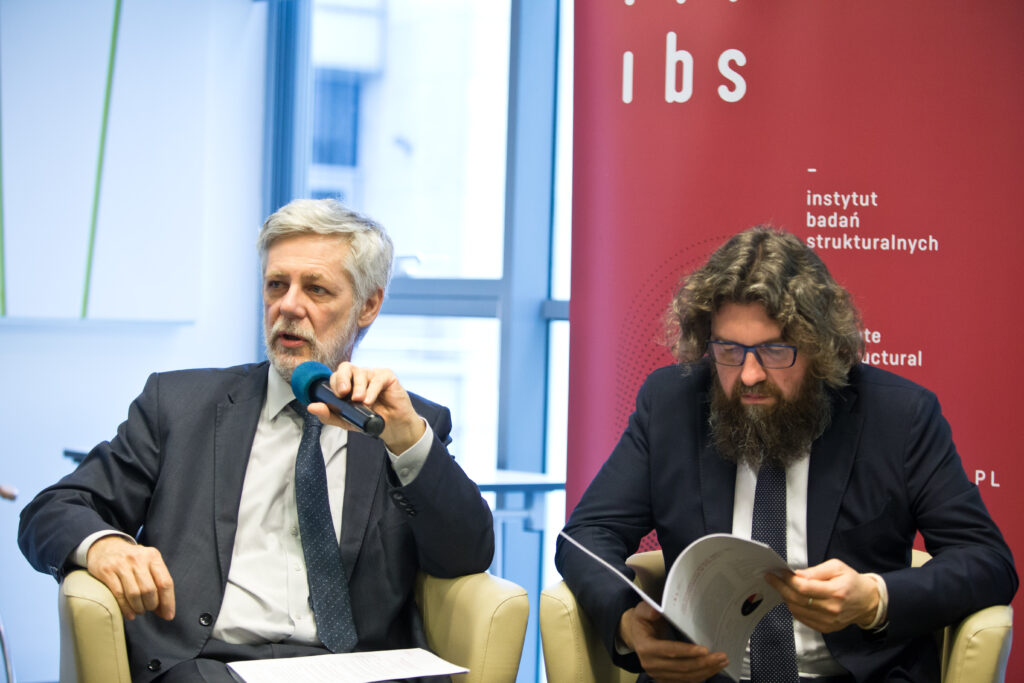

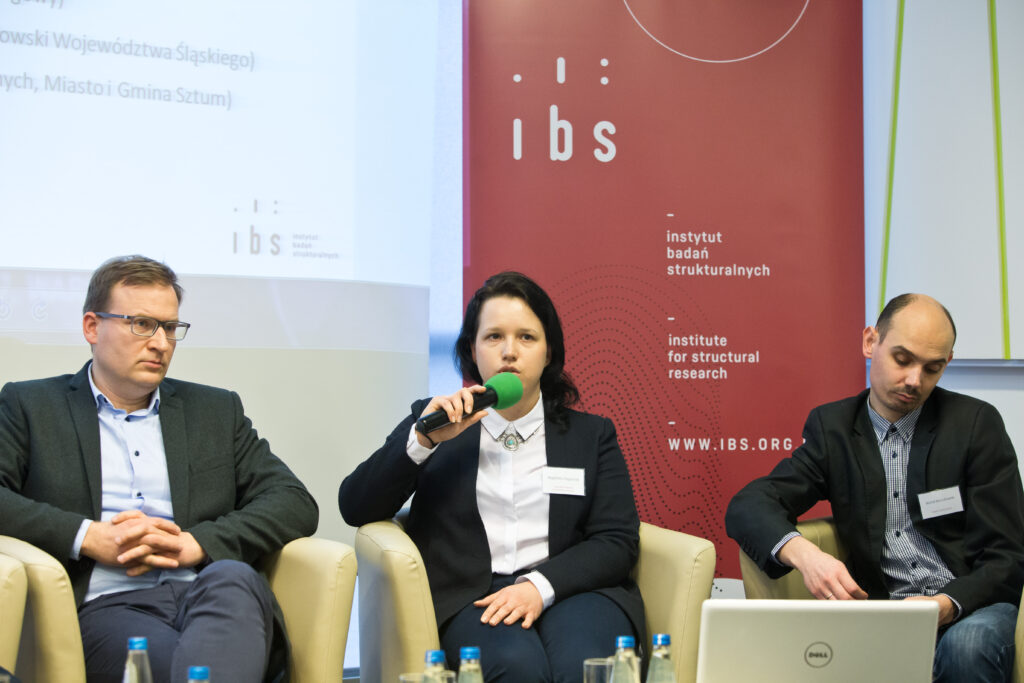
Anti-smog resolutions are necessary, but insufficient
In opposition to the Deputy Minister Piotrowski’s statement, Andrzej Guła (Polish Smog Alert) stated that the anti-smog tariff will not improve air quality. He said that the introduced tariff will not encourage people to change their heat source, and thus it will not contribute to smog reduction, because electric heating is more expensive than other types of heating. According to him, you cannot advertise something that is more expensive as an attractive solution. Switching from heating with coal to electric heating can be cost-effective, but it requires developing a different type of tariff.
We should think about solving the smog problem in two ways– Andrzej Guła (PSA)
Andrzej Guła emphasized that anti-smog resolutions are the basic and key tool for improving air quality in Poland, but they are insufficient. We need a separate programme addressed to the energy poor. So far, public aid was granted not only to the most needy but also to those who could afford to replace boilers without co-funding. We should think about solving the smog problem in two ways – different instruments should be created for the energy poor than those for the rest of society.
Financing is the main problem indicated by municipalities
Magdalena Kapuśniak(Marshal’s Office of the Śląskie Voivodship) stressed that anti-smog tariffs are not the first solutions aimed at improving air quality in Poland. She added that before the introduction of the anti-smog resolution in Silesia, the Marshal’s Office carried out consultations with the municipalities about the measures that must be taken in order to improve air quality and provide support for the poorest. Municipalities undertook thermal retrofitting activities in council houses despite problems with finding funding. Local problems related to thermal retrofitting were also presented by Michał Mroczkowski (Town and Municipality Office in Sztum). Besides funding, formal and legal gaps and provisions regarding buildings entered into the register of monuments proved to be a problem for the municipality.
How to carry out effective thermal retrofit?
Szymon Firląg(Buildings Performance Institute Europe) pointed out that in many cases heating with cheap fuel does not result from low income, but only from the financial benefits and the lack of a penalties system. He listed the conditions for the effectiveness of air quality improvement programmes: sustainability (minimum 10 years), universality, and effectiveness. He emphasized that the amount of PLN 180 million declared by the government is insufficient to carry out large-scale thermal retrofitting.
text: Agata Miazga
translation: Urszula Gałecka-Sobiech
***
We would like to thank the participants, panellists, and speakers for discussions and valuable comments!
We hope that the substantive discussion about the problems of the energy poor will help develop effective support instruments. Results of research carried out by the Institute for Structural Research on energy poverty can be found here: https://ibs.org.pl/en/research/energy-poverty/.
realizacja: Manufaktura Video
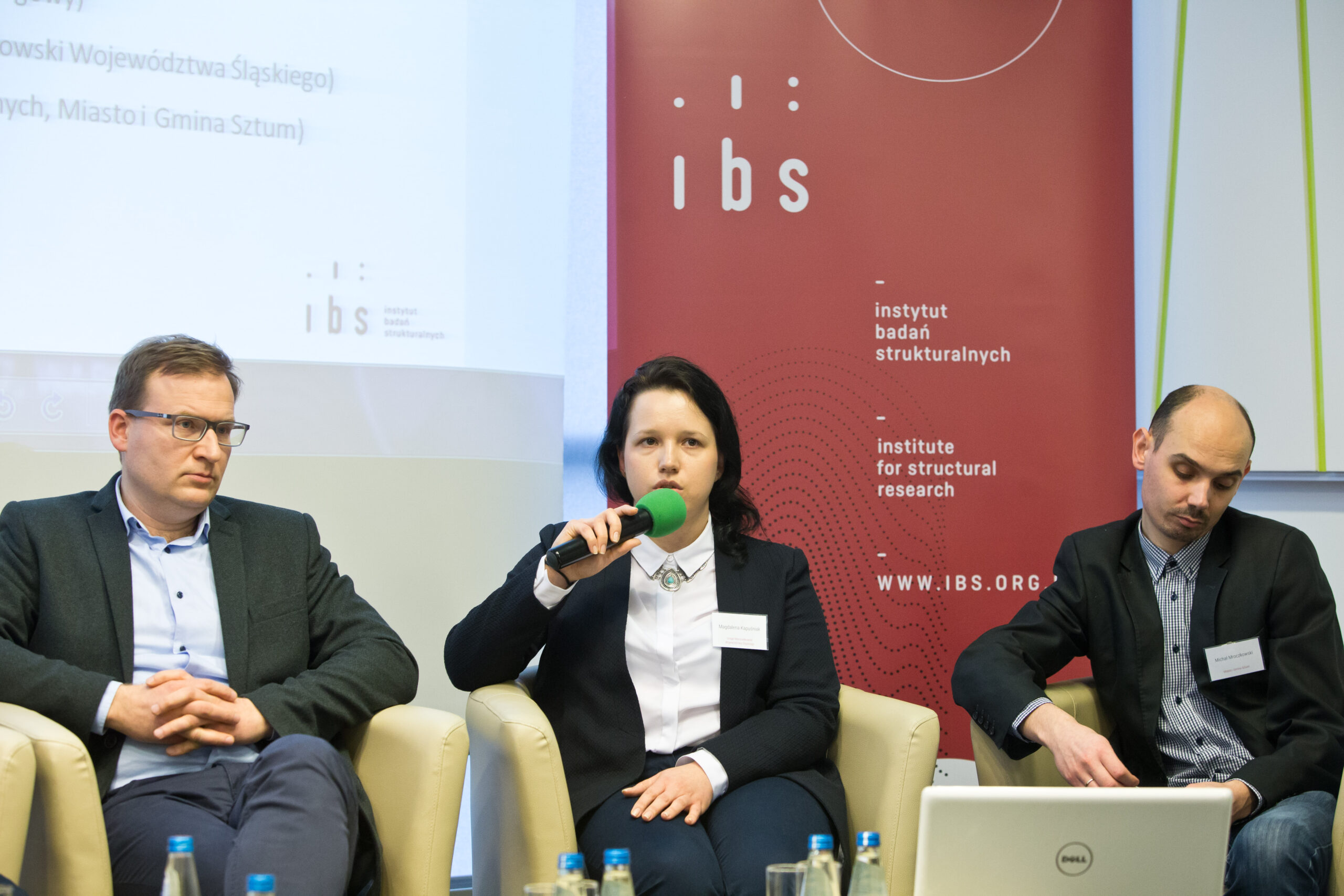
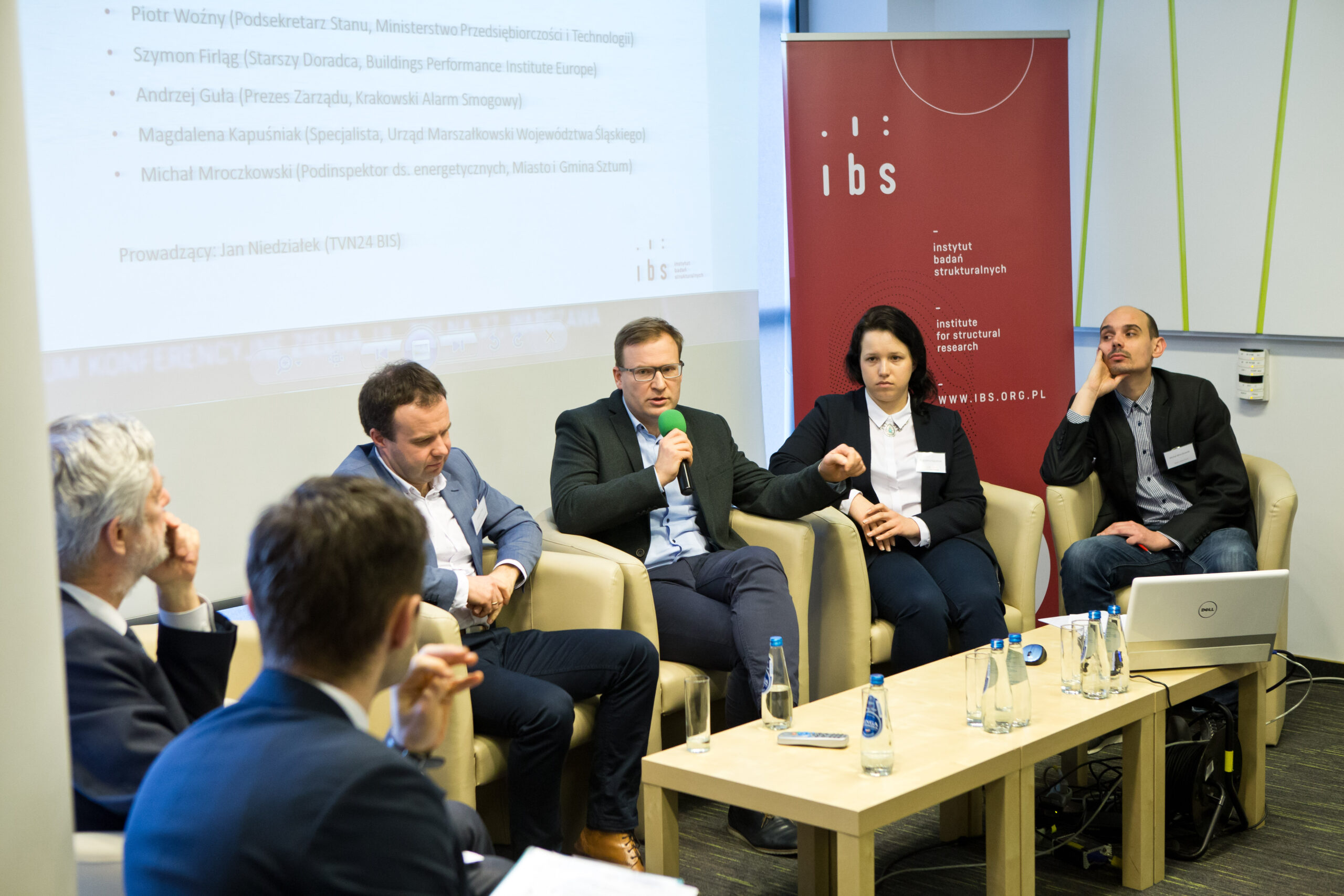





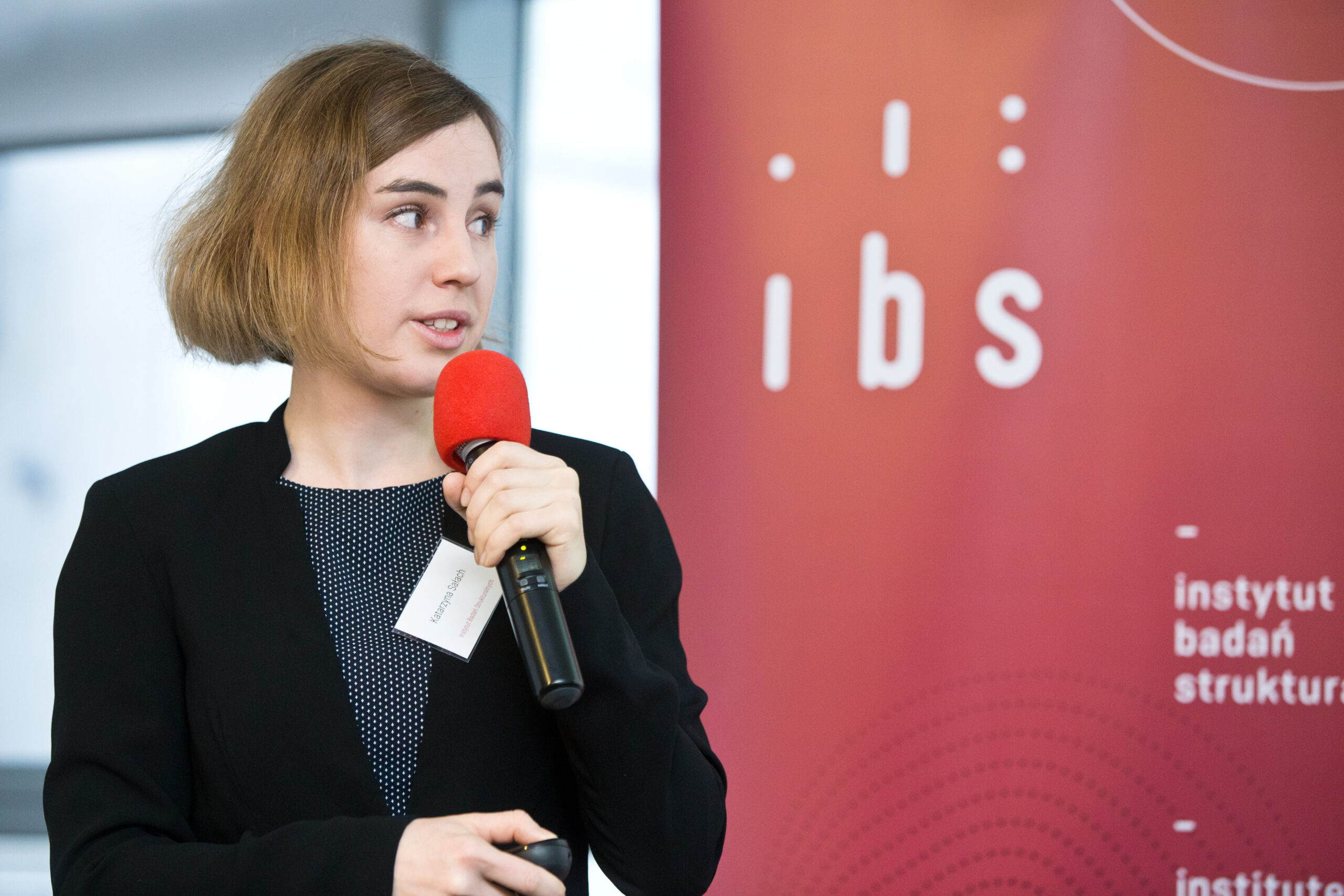
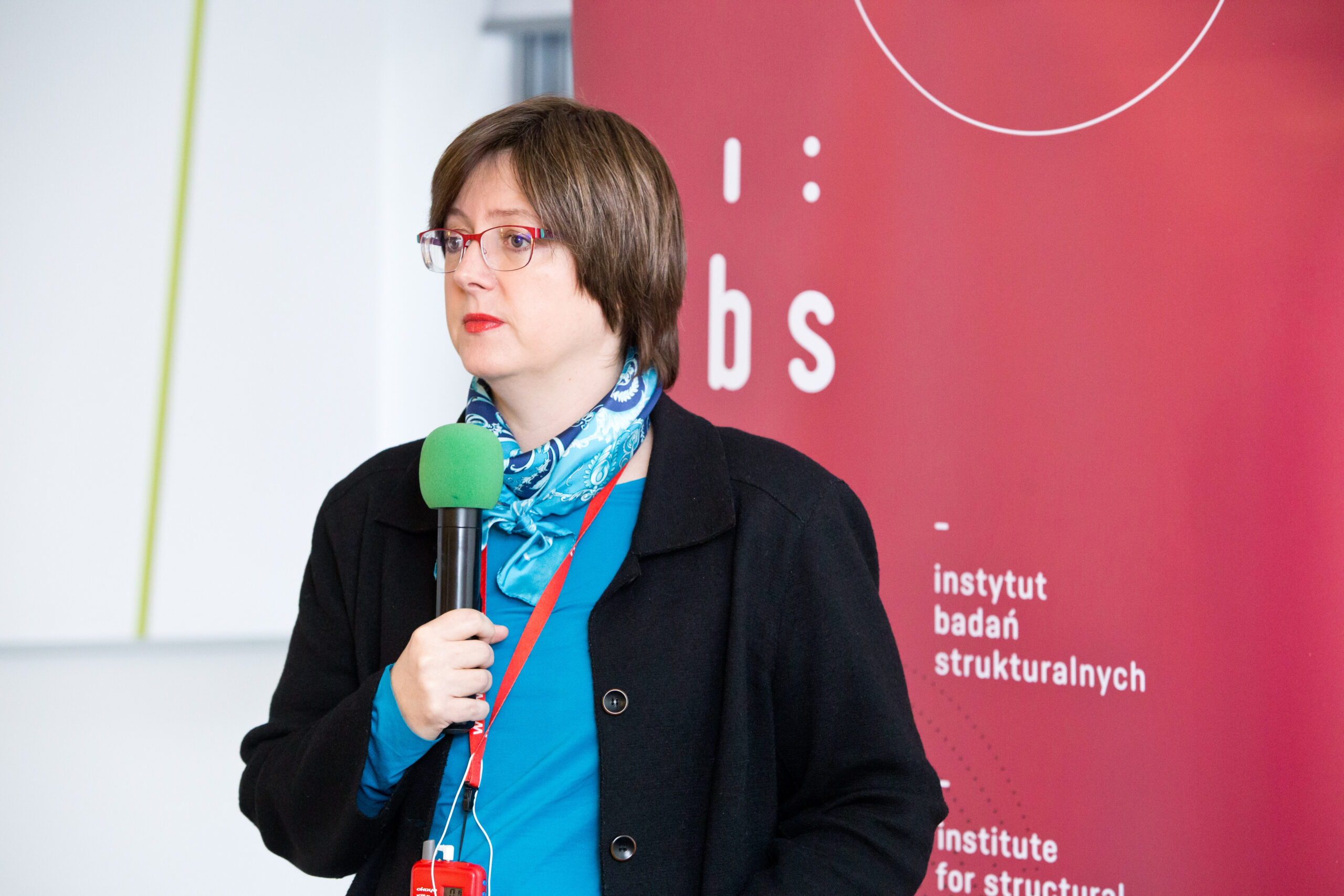
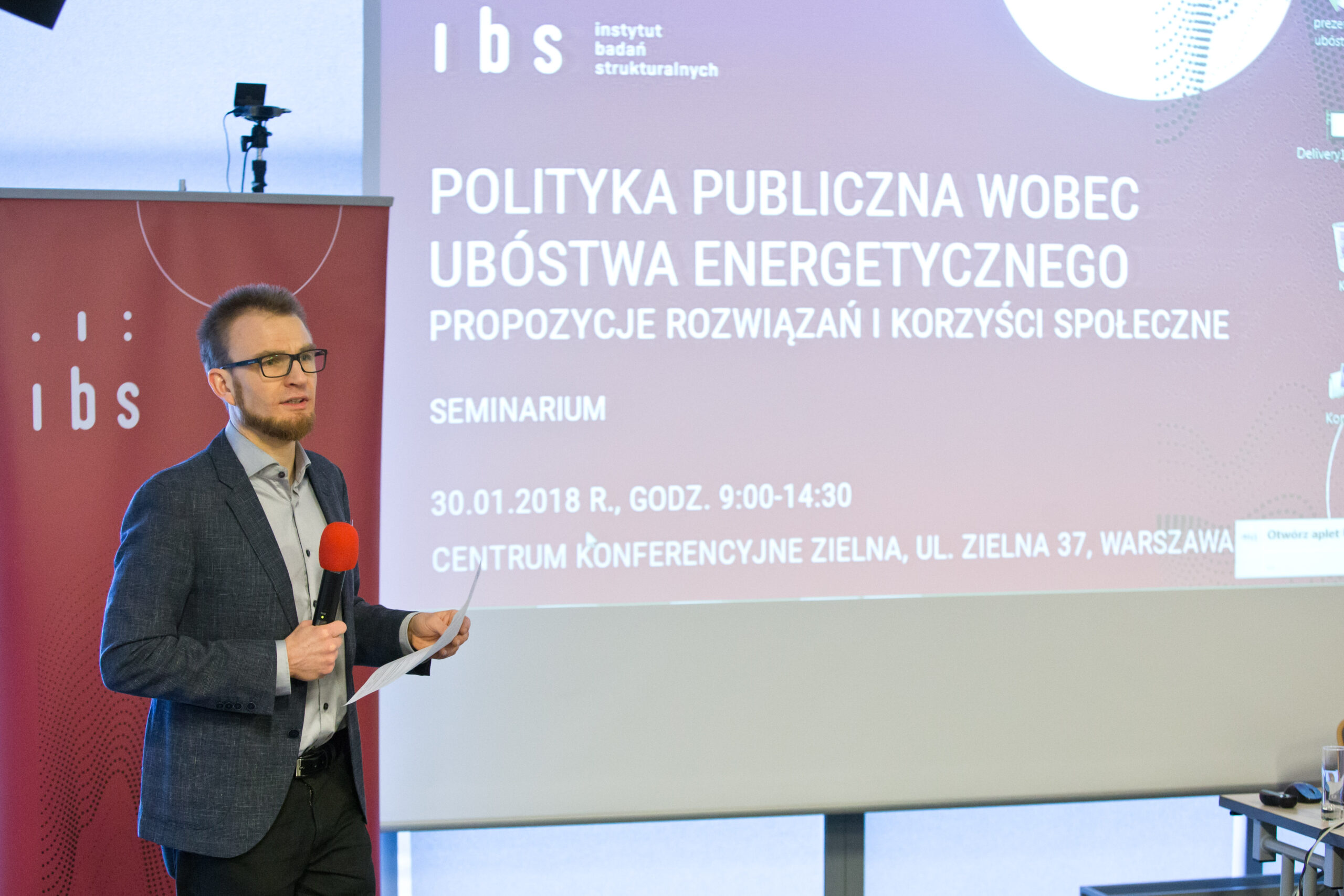
photos: Kuba Kiljan
The seminar was financially supported by the European Climate Foundation (“Energy poverty” project and “Labour market impact of building energy retrofit in Poland” project).
The seminar was the third event organised by IBS about energy poverty in Poland. Previous events: Fuel poverty in Poland – from theory to practice (11.2016) and New perspective on inequalities and poverty in Poland (12.2015).
 U.-Dubois-The-French-approach-to-energy-poverty-1.pdf
U.-Dubois-The-French-approach-to-energy-poverty-1.pdf
 L.-Dupre-Combating-energy-poverty-and-activating-and-activating-long-term-unemployed-1.pdf
L.-Dupre-Combating-energy-poverty-and-activating-and-activating-long-term-unemployed-1.pdf
 IBS_Seminar_IBS_30.01.2018-agenda.pdf
IBS_Seminar_IBS_30.01.2018-agenda.pdf


